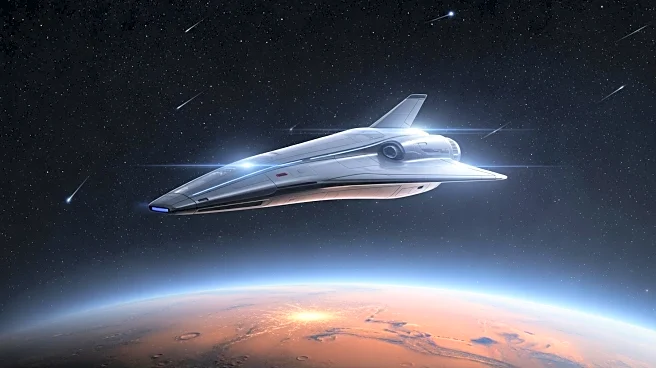What's Happening?
NASA's ESCAPADE mission, part of the Small Innovative Missions for Planetary Exploration (SIMPLEX) program, has successfully launched two small satellites to Mars. The mission aims to study the interactions
between solar particles and the Martian magnetic field and atmosphere. The satellites, named Blue and Gold, were launched on Blue Origin's New Glenn rocket from Cape Canaveral Space Force Station in Florida. This mission marks the first coordinated multi-spacecraft science mission to Mars, allowing for simultaneous observations of the Martian upper atmosphere and magnetosphere. The launch faced several delays due to technical issues and space weather conditions but was successfully completed on November 13th.
Why It's Important?
The ESCAPADE mission is significant as it will provide valuable insights into Mars' space weather environment, which is similar to Earth's. Understanding these interactions is crucial for future Mars missions, including potential human exploration. The data collected will help improve communication systems on and around Mars, aiding in the development of the Mars Telecommunications Orbiter mission. The mission's success also highlights the capabilities of Blue Origin's New Glenn rocket and Rocket Lab's Photon Explorer satellite bus, paving the way for future space exploration missions.
What's Next?
ESCAPADE will travel to the Lagrange point beyond Earth's orbit before heading to Mars. The mission is expected to arrive at Mars in 2027, with scientific operations beginning in 2028. The spacecraft will conduct a three-year nominal mission, providing continuous data on Mars' space weather. The success of this mission could lead to further collaborations between NASA, Blue Origin, and Rocket Lab, potentially expanding the scope of planetary exploration missions.
Beyond the Headlines
The ESCAPADE mission represents a significant step in multi-spacecraft planetary exploration, offering a stereo perspective on Mars' dynamic space environment. This approach allows scientists to separate changes in space and time, providing a more comprehensive understanding of the Martian atmosphere. The mission also demonstrates the growing role of private companies like Blue Origin and Rocket Lab in advancing space exploration technologies.












